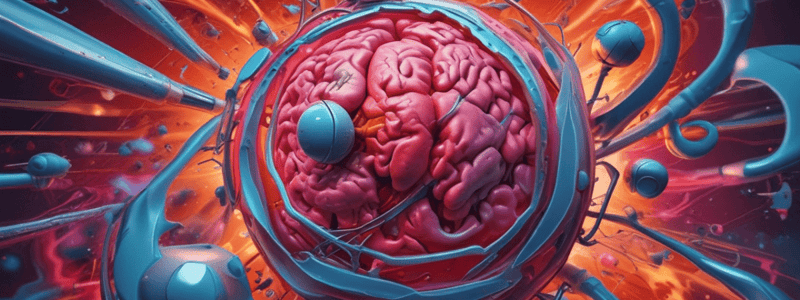Podcast
Questions and Answers
Which of the following is NOT a common cause of disseminated intravascular coagulation (DIC)?
Which of the following is NOT a common cause of disseminated intravascular coagulation (DIC)?
- Enzymes in certain snake venoms
- Myocardial infarction (correct)
- Complications of prostate surgery
- Severe tissue damage due to head trauma
What is the primary manifestation of slowly evolving DIC?
What is the primary manifestation of slowly evolving DIC?
- Bleeding complications
- Thrombocytopenia and depletion of coagulation factors
- Intravascular hemolysis
- Venous thromboembolic events (correct)
Which of the following is NOT a potential complication of severe, rapidly evolving DIC?
Which of the following is NOT a potential complication of severe, rapidly evolving DIC?
- Increased platelet activation (correct)
- Thrombocytopenia
- Depletion of plasma coagulation factors and fibrinogen
- Bleeding into organs
Which of the following statements about the management of shock is INCORRECT?
Which of the following statements about the management of shock is INCORRECT?
Which of the following conditions is associated with the Kasabach-Merritt syndrome?
Which of the following conditions is associated with the Kasabach-Merritt syndrome?
What is the primary mechanism by which delayed dissolution of fibrin polymers can lead to intravascular hemolysis in DIC?
What is the primary mechanism by which delayed dissolution of fibrin polymers can lead to intravascular hemolysis in DIC?
Which of the following statements about the pathophysiology of DIC is CORRECT?
Which of the following statements about the pathophysiology of DIC is CORRECT?
Which of the following therapies is NOT mentioned as part of the management of shock?
Which of the following therapies is NOT mentioned as part of the management of shock?
Which of the following statements about the causes of DIC is INCORRECT?
Which of the following statements about the causes of DIC is INCORRECT?
Which of the following statements about the conclusion of the lecture is CORRECT?
Which of the following statements about the conclusion of the lecture is CORRECT?



